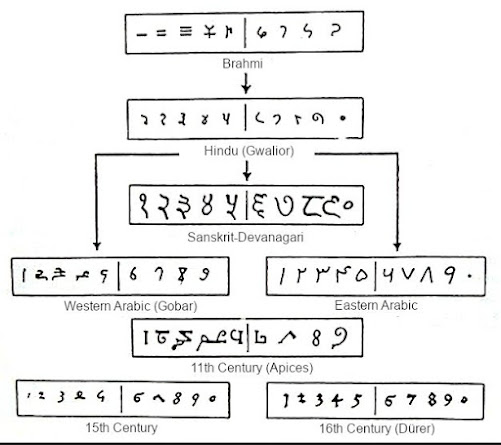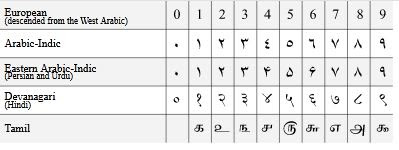INTRODUCTION
MATHEMATICS - “THE QUEEN OF SCIENCES”
– Carl Friedrich Gauss – the German Philosopher
One of the most significant subjects in the school days was Mathematics. Many students struggle to get pass marks in this subject. It was one of the toughest subjects for most of the students during school days.
For the lower class pupils, the bitterness of maths starts when they start learning about Multiplications and Divisions. For the next level of pupils, it begins when they learn about Algebra. In the higher secondary level of pupils, the bitterness rises while learning about Trigonometry, Differential Calculus, and Integral Calculus and it goes on.
The difficulty of maths is because of formulae. Many pupils feel it is difficult to memorize or by heart, and the most significant reason is they are scared of the word ‘Maths’.
However, it is one and only subject where one can score centum only by reading the formulae and applying for the numbers in it. It increases the total marks as well.
What is Mathematics?
 | ||||||
Image Courtesy : Wikimedia Commons
The term ‘math’ or ‘maths’ means ‘mathematics’. Mathematics is a science, research of numbers, shapes, patterns, quantity, measurements and arrangements.
Maths exist in all matter what one does. It is in use in everyday lives. It is the foundation for everything.
The word mathematics derived from the Greek word ‘máthema’ meaning science, knowledge or learning. The word ‘math’ are in use in the United States and Canada; ‘maths’ are in use by England, Australia, Ireland, and New Zealand.
‘The science of quantity’ – definition is given by Aristotle.
Mathematics is the subject that includes :
i) Numbers: it helps for counting the things. This field includes numbers of Natural, Integers, Rational, Real, Complex, Ordinal, Cardinal Numbers, Arithmetic Operations, Arithmetic Relations, and Functions.
ii) Structure: it involves in the organization of things, this includes Number Theory, Algebra, Linear Algebra, Order Theory, and Graph Theory.
iii) Place/Shapes: this involves how things are arranged; this has Topology, Geometry, Trigonometry, Differential Geometry, and Fractal Geometry.
iv) Change: this is about analysing how the things get changes, the areas are Calculus, Vector Calculus, Analysis, Differential equations, Dynamical Systems, Chaos Theory.
There are Two main branches:
- Pure Mathematics
- Applied Mathematics
Pure Mathematics
The study of mathematical concepts is independent of any applications outside of mathematics. These includes Proof theory and Mathematical Logic, which further divided into sub-fields such as arithmetic, algebra, geometry, calculus, topology, analysis, etc.
Applied Mathematics
The combination of mathematics and specialized knowledge in other fields such as Engineering, Physics and computing named as Applied Mathematics. It includes probability, statistics, computational sciences, and physical sciences.
 |
|
The Brahmi numeral system and its descendants
|
FACTS ABOUT MATHEMATICS
-
Many cultures from India, China, Mesopotamia, Egypt, and Central America have devoted to the improvement of mathematics.
- From the early as the 4th millennium BCE, The Sumerians were the first developer of the counting system 2700 – 2300 BCE. Here, the mathematicians invented the arithmetic i.e., the basic operations like multiplications, divisions, squares, cube roots, geometrical problems fractions, and the square roots.
-
From the Sumerians, it moved to the Akkadian Empire to the Babylonians about 3000 B.C.
- From this period, the Mesopotamian regions like Sumer, Akkad, and Assyria, addition to Ancient Egypt, Ebla began to use arithmetic, algebra, and geometry in their day-to-day activities like taxations, commerce, trade, astronomy, and to formulate calendars and times.
- In America, the Mayans developed calendar systems and they were skilled in astronomy.
- The digit ‘0’, ‘zero’ designed by Aryabhata (476 AD – 550 AD), one of the most distinguished astronomers of the classic age of India.
- The knowledge of mathematics arose in the 6th century BC.
- The term ‘mathematics’ coined by ‘Pythagoreans’ from the Greek word ‘máthema’, meaning ‘subject of instructions’.
- The Persian Mathematician and Astronomer Muhammad ibn Musa al- Khwarizmi (780 – 850 CE) invented the ‘algebra’, Arabic word of ‘al-jabr’ title of his book in the 9th century. He also developed an ‘algorithm’, the name derived from the Latin translation of his name. He is known as the ‘Father of Algebra’.
- The 3rd century BC referred as ‘Golden Age of Greek Mathematics’ since Trigonometry had a significant advancement during this period.
- Hipparchus of Nicaea (190 – 120 BC): Founder of Trigonometry.
- Hypatia (Born: 350 - 370 Died : 415 AD): First Female Mathematician.
- Plimpton322 (Babylonian 1900 BC), the Rhind Mathematical Papyrus (Egyptian 2000 – 1800 BC) and the Moscow Mathematical Papyrus (Egyptian 1890 BC): are the most ancient mathematical Text founded in Mesopotamia and Egypt. All these books mentioned about the ‘Pythagorean Theorem’.
- There is no ‘Nobel Prize’ for Mathematics.
- Mathematicians receive ‘Abel Prize’ and the ‘Fields Medal’.
- In 2000, the Clay Mathematics Institute announced seven Millennium Prize Problems, one million dollars for each problem.
- The tools used to determine puzzles in earlier days were Abacus, Napier’s Bones, Slide Rule, Ruler and Compass, Mental Calculation.
- The latest tools are Calculators and Computers, Programming Languages, SAS programming language, R Programming language, Statistics Software, etc.
- Srinivasa Aiyangar Ramanujan (born: 1887- died: 1920) an Indian had proved more than 3000 theorems.
- Shakuntala Devi (1929 - 2013) : Indian Author, Mathematician, mental Calculator commonly known as ‘Human Computer’.
- Four is a unique number with an equal number of letters.
- The digit ‘0’ has no Roman symbol.
- 1000 : the first number to hold the letter ‘a’.
- A ‘googol’ : referred as 10100 or the number1 succeeded by 100 zeros designed by American Mathematician EdwardKasner in 1920. The term minted in 1938 by 9-year-old boy Milton Sirotta nephew of American Mathematician Edward Kasner. He coined the terms ‘googol’ and ‘googolplex’
- A ‘googolplex’: where the number one followed by googol of zeros. The scientific notation is 1010^100.
- ‘Skewes’ : proposed by the South African mathematician Stanley Skewes in 1933. Skewes is 10th to the 10th to the 10th to the 34th ie. 10^10^10^34.
- Graham’s Number generated by mathematician R.L. Graham. It is the highest number.
- The ‘=’ sign was developed by Wales (Welsh) mathematician Robert Recorde in 1557. It is a Latin word, indicating uniform , identical.
- J & K : are the unique letters which do not arise in any of the numbers when written in words.
- All odd integers have letter ‘e’ if written in words.
- The terms used after Million for counting are Million, Billion, Trillion, Quadrillion, quintillion, sextillion, septillion, octillion, nonillion, decillion and undecillion.
- Plus (+) and Minus (-) signs applied as early as 1489 A.D.
- The numbers 111,111,111*111,111,111 = 12,345,678,987,654,321
- The total of the figures 1-100 sequentially(1+2+3+..+100), the result is 5050.
- The unit of 1/100 of a second is ‘jiffy’.
- The figures on facing sides of the dice forever add up to seven.
- Roman numerals have only seven letters, which forms the entire number system, I, V, X, L, C, D and M.
- March 14 observed as the ‘Pi day’ and The International Day of Mathematics.
- World Maths Day celebrated globally on the 15th of October every year.
- The number 9 viewed as the magic number. This is because, multiplying a number by 9 and adding all the digits of the new number (result) together the sum will always add up to 9. E.g. 8 x 9 = 72 or 7 + 2 = 9.
-
The Abacus concept applied for the development of the calculator.
- The spiral shape of a flower ‘Sunflower’ follows the ‘Fibonacci Series’.
- The number 2520 is the least number, which is accurately divided by all the numbers from 1 to 10.
- Issac Newton’s book ‘Principia Mathematica’ holds a simple calculation error, which was unnoticed for about 300 years.
- The calendar year 2013 was the first calendar year since the year 1432, which is the rearrangement of four sequential numbers.
- There is single even prime number which is ‘2’.
- The digits 0 to 9 known as Hindu Arabic Numeral System discovered in India more than 1000 years ago.
-
The numbers 2 and 5 are the only prime numbers that end with 2 and 5.

Number forms in Ancient India Image Courtesy : Wikimedia Commons
Hindu Arabic Numeral System Image Courtesy : Wikimedia Commons
Besides these facts, there might be so many facts found about the mathematics. If you knew it, you can write it in the comment section.
CONCLUSION
Mathematics is useful for solving many problems that occur in the real world. Many people studies and uses maths besides they are mathematician. Mathematics knowledge is required today to grab a job. Mathematics used in all streams like a business, Science, Engineering, construction, Space and many more to achieve their target.




Those are really great information
ReplyDeleteMathematics is considered as the toughest subject in STEM but Mathematicians consider them to be very interesting and easy.....
Thank you for sharing this post ��
JENISH | https://knowafactfromj.blogspot.com
Thanks Joyal...
Delete